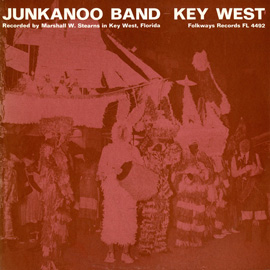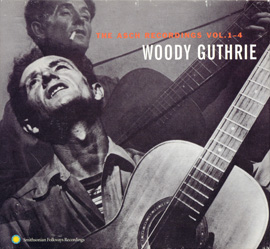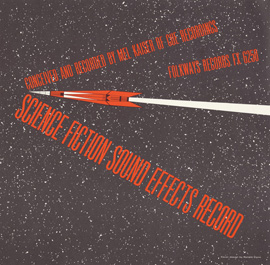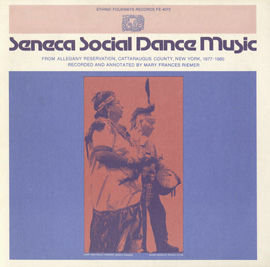Summary
Study of a musical piece of the rich cultural heritage of some of the early settlers of Pennsylvania known as the Pennsylvania Dutch. This study can be a vehicle for musical experiences through singing, notating, creating and analyzing to music. The resources “from other” referenced here are for greater understanding of the Pennsylvania Dutch. The book gives a glimpse of the importance of music in the heart of Pennsylvania Dutch country.
Suggested Grade Levels: K-2, 3-5, 6-8, 9-12
Country: United States
Region: North America
Culture Group: Penn Dutch
Genre: American
Instruments: Voice
Language: English, German
Co-Curricular Areas: Social Studies, German
National Standards: 1, 4, 5, 6, 9
Prerequisites: None
Objectives:
- Sing and analyze “Des Bucklich Mennli”
- Create “Question & Answer Songs”
Material:
- Smithsonian Folkways, “Des Bucklich Mennli (The Little Humpback)” by George Britton from Pennsylvania Dutch Folk Songs (Cat. # FW 02215) (Both the sound examples and the liner notes)
- Internet availability for Smithsonian Folkways, “Schpinn, Schpinn” by George Britton from Pennsylvania Dutch Folk Songs (Cat. # FW 02215) (Both the sound examples and the liner notes)
Lesson Segments:
- Des Bucklich Mennli (National Standards 1, 4, 5, 6)
- Schpinn, Schpinn (National Standards 9)

“Des Bucklich Mennli (The Little Humpback)”
from Pennsylvania Dutch Folk Songs (1955) | FW02215
“Schpinn, Schpinn”
1. Des Bucklich Mennli
- Objectives:
- Learn to sing “Des Bucklich Mennli”
- Recognize the form of the piece
- Transcribe the song
- Compose harmonic accompaniment
- Materials:
- Smithsonian Folkways, “Des Bucklich Mennli (The Little Humpback)” by George Britton from Pennsylvania Dutch Folk Songs (Cat. # FW 02215) (Both the sound examples and the liner notes)
- Speakers for on-line computer
- Staff paper (levels 3 and 4)
- Composition paper
- Procedure:
- Level One (K-2):
- Teacher gives a short description of the Pennsylvania Dutch settlers, then discuss the song Des Bucklich Mennli (see liner notes)
- Play the excerpt of Des Bucklich Mennli (The Little Humpback) for the students
- Students discuss how the song sample is organized as they listen again
- Students sing Des Bucklich Mennli on a neutral syllable
- Teacher reviews the PA Dutch text with the students
- Students speak the text, then sing it one verse at a time
- Teacher shares with the students the English translation (German classes can translate this song on their own.)
- Students discuss a life filled with both work and imagination
- Students can make a personal connection, and create their own text to put to the melody
Assessment:
Listen to the students’ response to: the songs’ form, singing of Des Bucklich Mennli, understanding of the purpose of the song, their ability to relate to the translation, their ability to put their own text to the melody. ** German Students should be assessed on their translations, and should create their own text in German. These students may also relate how this song relates to German culture.
- Level Two (3-5):
- Students will read the melody of Des Bucklich Mennli from the board, starting with counting the rhythm, then singing the pitches on solfege
- Sing the song on syllables (counting, solfege, neutral, etc)
- Teacher gives a short description of the Pennsylvania Dutch settlers and the song (see liner notes)
- Add the PA Dutch text to what they have read
- Teacher shares with the students the English translation
- Students discuss a life filled with both work and imagination
- Students can make a personal connection, and create their own text to put to the melody
Assessment:
Listen to the students’ response to: singing pitches and rhythms accurately, putting pitches and rhythms together, understanding the purpose of the song, their ability to relate to the translation, their ability to put their own text to the melody.
- Level Three (6-8):
- Teacher gives a short description of the Pennsylvania Dutch settlers and the song Des Bucklich Mennli (see liner notes)
- Play the excerpt of Des Bucklich Mennli (The Little Humpback) for the students
- Teacher and students discuss and identify the solfege syllable of the resting tone of the piece
- Students figure out the solfege for the melody
- Students figure out the rhythm of the melody
- Students transfer their pitches and rhythms to staff paper
Assessment:
Listen to and read the students’ response to the songs’ resting ton, accurately identifying the pitches and rhythms, and their ability to transfer their work to staff paper
- Level Four (9-12):
- After completing Level 3 exercises, student will create a simple harmonic accompaniment to the song
- This melody and harmony can be played on instruments in band and orchestra settings
Assessment:
Listen to the students’ effective creation of harmonies. Allow students to discuss whether or not they feel their harmonies work as they are put together with the melody.
2. Schpinn, Schpinn
- Objectives:
- Students will be familiar with Question and Answer songs, common in Pennsylvania Dutch music
- Students will be able to create their own Question and Answer verses
- Students will make connection to modern examples of Question and Answer songs
- Materials:
- Internet availability for Smithsonian Folkways, “Schpinn, Schpinn” by George Britton from Pennsylvania Dutch Folk Songs (Cat. # FW 02215) (Both the sound examples and the liner notes)
- Speakers
- Procedure:
- Teacher will explain what a Question and Answer song is
- Students will learn the song Schpinn, Schpinn
- Teacher leads discussion as to why it is a Question and Answer song, and translates it for the students; students will also address why the events of this story may have occurred, and how similar types of conversations exist in our households today
- Teacher leads discussion on other types of music, new and old, that involve a dialogue
- Students, with their understanding of Pennsylvania Dutch culture and lifestyle will create their own verses to the Question and Answer song
Assessment:
This should provide a way to assess how students progressed. This can address music proficiency, attentiveness, improvement, effort, etc. and should be appropriate to the grade levels.
Resource List:
- “Des Bucklich Mennli (The Little Humpback)” by George Britton from Pennsylvania Dutch Folk Songs (Cat. # FW 02215)
- Cultural information on the Pennsylvania Dutch freely available on the Internet







